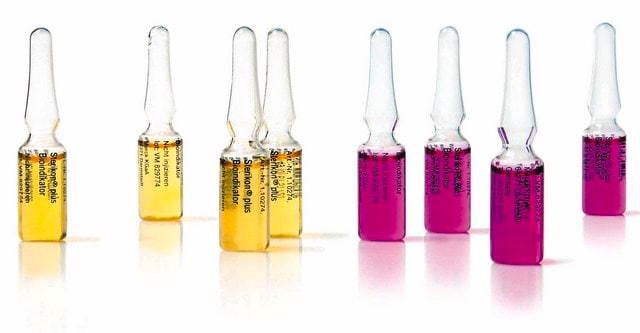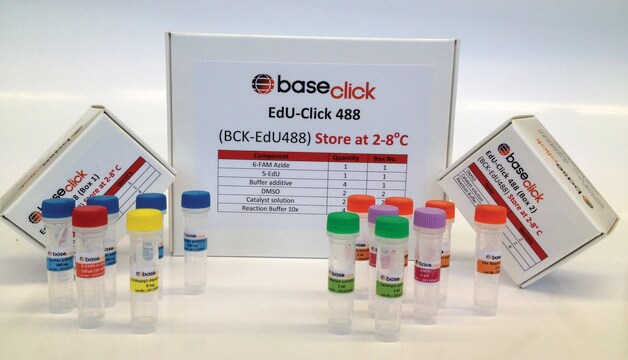추천 제품
일반 설명
FUNCTION: SwissProt: Q15848 # Important adipokine involved in the control of fat metabolism and insulin sensitivity, with direct anti-diabetic, anti-atherogenic and anti-inflammatory activities. Stimulates AMPK phosphorylation and activation in the liver and the skeletal muscle, enhancing glucose utilization and fatty-acid combustion. Antagonizes TNF-alpha by negatively regulating its expression in various tissues such as liver and macrophages, and also by counteracting its effects. Inhibits endothelial NF-kappa-B signaling through a cAMP-dependent pathway. May play a role in cell growth, angiogenesis and tissue remodeling by binding and sequestering various growth factors with distinct binding affinities, depending on the type of complex, LMW, MMW or HMW.
SIZE: 244 amino acids; 26414 Da
SUBUNIT: Homomultimer. Forms trimers, hexamers and 12- to 18-mers. The trimers (low molecular weight complexes / LMW) are assembled via non-covalent interactions of the collagen-like domains in a triple helix and hydrophobic interactions within the globular C1q domain. Several trimers can associate to form disulfide-linked hexamers (middle molecular weight complexes / MMW) and larger complexes (higher molecular weight / HMW). The HMW-complex assembly may rely aditionnally on lysine hydroxylation and glycosylation. LMW, MMW and HMW complexes bind to HBEGF, MMW and HMW complexes bind to PDGFB, and HMW complex binds to FGF2.
SUBCELLULAR LOCATION: Secreted.
TISSUE SPECIFICITY: Synthesized exclusively by adipocytes and secreted into plasma.DOMAIN:SwissProt: Q15848 The C1q domain is commonly called the globular domain.
PTM: Hydroxylated Lys-33 was not identified in PubMed:16497731, probably due to poor representation of the N-terminal peptide in mass fingerprinting. & HMW complexes are more extensively glycosylated than smaller oligomers. Hydroxylation and glycosylation of the lysine residues within the collagene-like domain of adiponectin seem to be critically involved in regulating the formation and/or secretion of HMW complexes and consequently contribute to the insulin- sensitizing activity of adiponectin in hepatocytes (By similarity). & O-linked glycans consist of Glc-Gal disaccharides bound to the oxygen atom of post-translationally added hydroxyl groups. & Not N-glycosylated.
DISEASE: SwissProt: Q15848 # Defects in ADIPOQ are the cause of adiponectin deficiency [MIM:605441]. The result is a very low concentration of plasma adiponectin. Decreased adiponectin plasma levels are associated with obesity insulin resistance, and diabetes type 2.
SIMILARITY: Contains 1 C1q domain. & Contains 1 collagen-like domain.
MISCELLANEOUS: Variants Arg-84 and Ser-90 show impaired formation of HMW complexes whereas variants Cys-112 and Thr-164 show impaired secretion of adiponectin in any form. & HMW-complex blood contents are higher in females than in males, are increased in males by castration and decreased again upon subsequent testosterone treatment, which blocks HMW- complex secretion (By similarity). In type 2 diabetic patients, both the ratios of HMW to total adiponectin and the degree of adiponectin glycosylation are significantly decreased as compared with healthy controls.
SIZE: 244 amino acids; 26414 Da
SUBUNIT: Homomultimer. Forms trimers, hexamers and 12- to 18-mers. The trimers (low molecular weight complexes / LMW) are assembled via non-covalent interactions of the collagen-like domains in a triple helix and hydrophobic interactions within the globular C1q domain. Several trimers can associate to form disulfide-linked hexamers (middle molecular weight complexes / MMW) and larger complexes (higher molecular weight / HMW). The HMW-complex assembly may rely aditionnally on lysine hydroxylation and glycosylation. LMW, MMW and HMW complexes bind to HBEGF, MMW and HMW complexes bind to PDGFB, and HMW complex binds to FGF2.
SUBCELLULAR LOCATION: Secreted.
TISSUE SPECIFICITY: Synthesized exclusively by adipocytes and secreted into plasma.DOMAIN:SwissProt: Q15848 The C1q domain is commonly called the globular domain.
PTM: Hydroxylated Lys-33 was not identified in PubMed:16497731, probably due to poor representation of the N-terminal peptide in mass fingerprinting. & HMW complexes are more extensively glycosylated than smaller oligomers. Hydroxylation and glycosylation of the lysine residues within the collagene-like domain of adiponectin seem to be critically involved in regulating the formation and/or secretion of HMW complexes and consequently contribute to the insulin- sensitizing activity of adiponectin in hepatocytes (By similarity). & O-linked glycans consist of Glc-Gal disaccharides bound to the oxygen atom of post-translationally added hydroxyl groups. & Not N-glycosylated.
DISEASE: SwissProt: Q15848 # Defects in ADIPOQ are the cause of adiponectin deficiency [MIM:605441]. The result is a very low concentration of plasma adiponectin. Decreased adiponectin plasma levels are associated with obesity insulin resistance, and diabetes type 2.
SIMILARITY: Contains 1 C1q domain. & Contains 1 collagen-like domain.
MISCELLANEOUS: Variants Arg-84 and Ser-90 show impaired formation of HMW complexes whereas variants Cys-112 and Thr-164 show impaired secretion of adiponectin in any form. & HMW-complex blood contents are higher in females than in males, are increased in males by castration and decreased again upon subsequent testosterone treatment, which blocks HMW- complex secretion (By similarity). In type 2 diabetic patients, both the ratios of HMW to total adiponectin and the degree of adiponectin glycosylation are significantly decreased as compared with healthy controls.
애플리케이션
Room temperature 7 hour assay including 2.5 hour sample pretreatment 10 µL sample size (serum, plasma and, adipocyte extracts or culture media samples)
분석 메모
Linearity 76-112%
면책조항
For research use only. Not for use in diagnostic procedures.
신호어
Danger
Hazard Classifications
Acute Tox. 3 Dermal - Acute Tox. 4 Inhalation - Acute Tox. 4 Oral - Aquatic Chronic 3 - Eye Dam. 1 - Met. Corr. 1 - Resp. Sens. 1 - Skin Irrit. 2 - Skin Sens. 1 - STOT RE 2
표적 기관
Respiratory Tract
Storage Class Code
6.1C - Combustible acute toxic Cat.3 / toxic compounds or compounds which causing chronic effects
시험 성적서(COA)
제품의 로트/배치 번호를 입력하여 시험 성적서(COA)을 검색하십시오. 로트 및 배치 번호는 제품 라벨에 있는 ‘로트’ 또는 ‘배치’라는 용어 뒤에서 찾을 수 있습니다.
자사의 과학자팀은 생명 과학, 재료 과학, 화학 합성, 크로마토그래피, 분석 및 기타 많은 영역을 포함한 모든 과학 분야에 경험이 있습니다..
고객지원팀으로 연락바랍니다.











